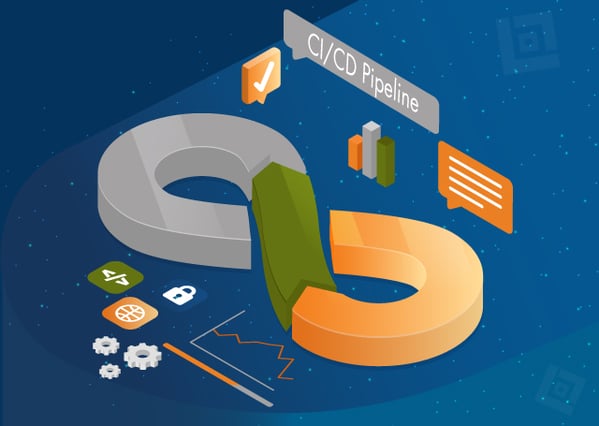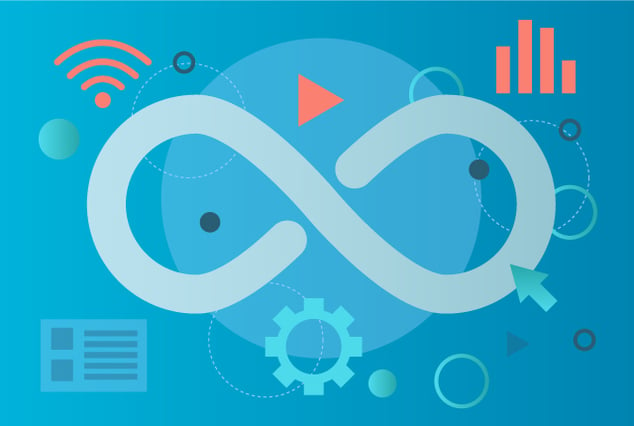
The speed of development services needs to evolve rapidly to keep up with rapid digital transformation. DevOps provides a solution to this situation.
DevOps is a set of strategies and tools designed to help an organization deliver solutions and services more quickly than conventional software development methods. The primary goal of DevOps is to reduce the time it takes for an organization to release an application. DevOps supports shorter, more consistent iterations by allowing organizations to foster improved collaboration among Development andOperations teams, and other stakeholders.
If you want to learn more about DevOps and how you can leverage it in your company, keep reading! This article will explain what DevOps is in software testing and the upcoming trends in this technology for 2022.
What is DevOps in Software Testing?
DevOps (a combination of "development" and "operations") is all about breaking down boundaries between these previously compartmentalized teams. Using a DevOps approach, teams from both development and operations collaborate across the software development life cycle (SDLC), from development and testing to delivery and operation.
To make DevOps work, not only do you need the right tools and procedures, but you also need to pay attention to your team's culture and mindset. A DevOps culture is based on the following tenets:
- Inspires continuous improvement: When new technologies, client demands, or statutory changes arise, organizations must constantly adjust their strategies to stay relevant. As such, when it comes to DevOps, constant improvement is a key priority.
- Focuses on automation: Automated procedures are essential for organizations that want to continuously develop and quickly address customer feedback.
- Encourages end-to-end responsibilities: Developers and operations specialists used to be segregated in the conventional software development model. However, in a DevOps setting, both groups are part of a single team responsible for the entire application lifecycle from start to finish.
- Champions a collaborative culture: DevOps is based on the idea that development and operations should be integrated into a single team that works toward a common goal. To accomplish this, brands must promote constant communication, sharing ideas, and problem-solving between development and operations.
- Remains customer-centric: DevOps demands continuous improvements, shifting when a method doesn't work anymore and investing in features to ensure customer satisfaction. Because of this, DevOps teams must keep a close eye on consumer demands to keep up with changing trends.
Emerging Trends in DevOps in 2022
Given the recent developments and forecasts, we can anticipate seeing these DevOps' latest trends in 2022.
-
Incorporation of Kubernetes with DevOps Practices
The rising popularity of container technology is one of the factors behind the emergence of DevOps. A container encapsulates all the necessary components, such as libraries, binary code, and configuration files, to run a program. The monitoring and coordination of all processes involved are where DevOps and containers encounter difficulties.
Kubernetes DevOps automates the deployment, scalability, and maintenance of containerized apps. It handles everything from virtual machine cluster management to load balancing and more when it comes to container management. Organizations have found it to be an excellent tool for controlling the flow of software updates.
Using Kubernetes DevOps, software developers and IT operations teams can quickly exchange numerous apps with each other in real-time. The Kubernetes workflow boosts productivity since it simplifies the DevOps development, test, and deployment processes.
Container management solutions and Kubernetes can eliminate the need for human contact and encourage a fully automated "NoOps" scenario. For developers, it simplifies the application of machine learning (ML) and artificial intelligence (AI) technologies for examining, predicting, and automating data and processes through a pipeline architectural approach.
-
Increased Cloud Adoption
When it comes to cloud-based processes and apps, most businesses have already made strides to embrace a cloud-centric architecture in the past several years. In light of the industry's urgent need to respond and adapt, this change has had to occur much quicker than initially anticipated.
However, even if a corporation uses cloud computing, it won't necessarily be considered technologically advanced. Puppet's 2021 State of DevOps research found that most DevOps teams are leveraging the cloud, but many are misusing it. According to the results, 65% of firms in the middle of their evolution use the public cloud, but only a fifth of them fully utilize it.
Evaluating various kinds of clouds could be advantageous for those trying to boost their cloud adoption. The 2021 Accelerate State of DevOps study reveals that Hybrid or multi-cloud projects were more likely to satisfy business performance expectations by 160% than more conventional cloud deployments.
-
Adoption of Artificial Intelligence and Machine Learning Practices in DevOps
In the realm of technology, nothing has been left untouched by AI and ML. Neither has DevOps, which has used several AI and ML techniques to achieve the most significant results. An AI-powered app development, delivery, deployment, and management system can improve team performance without a great deal of effort.
Using AI and ML to improve the efficiency of IT operations can have a significant impact on a company's bottom line. They can boost the efficiency of the team and represent a vital link between people and big data. When it comes to DevOps, AI proves to be a powerful tool that can help in making decisions.
-
Increased Adoption of GitOps
GitOps is a new addition to the DevOps process that automates and controls infrastructure. With GitOps, modifications to a group of systems can be implemented appropriately and then tested. Teams may easily automate the deployment of infrastructure with GitOps. The declaration files, like app development code, can be conveniently kept in a Git repository. As a result, downtime is reduced, making deployments more dependable and efficient. GitOps teams may employ the same approach to apps, infrastructures, and Kubernetes groups.
-
Growing Demand for IaC or Infrastructure as Code
More than merely automation, Infrastructure as Code (IaC) has become an essential part of DevOps. A more accurate comparison would be that configuration files are used to manage the entire Cloud IT architecture. Furthermore, it maintains continuity by automatically provisioning and configuring all environments without any human errors.
Easy cloud-native deployment, progressively transient architecture, traceability, consistency in delivering similar configurations, and improved productivity throughout the overall software development cycle are only a few of the essential advantages of Infrastructure as Code. It even allows you to go back to the last successful configuration.
-
Rise of DevSecOps
Security will continue to be a top priority for businesses of all kinds. Therefore, it's no wonder that DevSecOps adoption will skyrocket in 2022. From the beginning, DevSecOps incorporates strong security measures into standard DevOps methods. Cybersecurity protocols are tightly integrated through every phase of the development life cycle with the DevSecOps approach.
DevSecOps solutions can be simply integrated with CI/CD testing tools. As such, businesses can see improved performance in security and general IT efficiency. With the DevSecOps-centric strategy, it is possible to guarantee that security is incorporated into every stage of development, allowing any risks to be spotted and quickly addressed.
-
Automation
The DevOps world is no stranger to automation. However, just because a company is adept at automation doesn't guarantee competence at DevOps.
The Puppet 2021 State of DevOps study reports that highly advanced businesses are considerably more likely to have employed considerable automation. Results revealed that 90% of respondents with advanced DevOps methods said their teams had automated the majority of their routine chores.
Automation efforts will only become more urgent for firms that aren't regarded as highly advanced. As a result, teams need to focus on more than just automating the entire process. They should also be open to incorporating AI and ML into their systems.
It is possible to identify bottlenecks and capacity constraints in the delivery process by using ML. With this information, difficulties can be more effectively dealt with as they emerge. Predictive analytics powered by AI may make the DevOps process smarter by forecasting issues and suggesting possible remedies.
-
SRE and DevOps
According to a recent report from Google Cloud, more and more companies are integrating Site Reliability Engineering (SRE) into their DevOps processes. This is because DevOps teams can employ SRE methodologies like service-level indicators to optimize their own goals and procedures.
It turns out that teams who have mastered modern operational methods are more likely to report higher software deployment and operational efficiency levels than those who haven't, by 140%. In addition, these teams are more likely to report improved business results by 180%.
How QASource Can Help You Achieve Your DevOps Goals
Your company's future will benefit significantly from the adoption of DevOps. In this article, we've discussed what's new in DevOps that your company can adopt in 2022.
When the competition is so fierce, it's essential to keep up with the times. However, you don't have to go through this process by yourself. If you're transitioning to DevOps and require a dedicated software engineering and testing partner, QASource can help.
Our engineers can help you with numerous DevOps goals, such as workflow and production automation, dependency mapping, change risk management, and mainframe DevOps. Visit QASource or speak to a specialist today.


